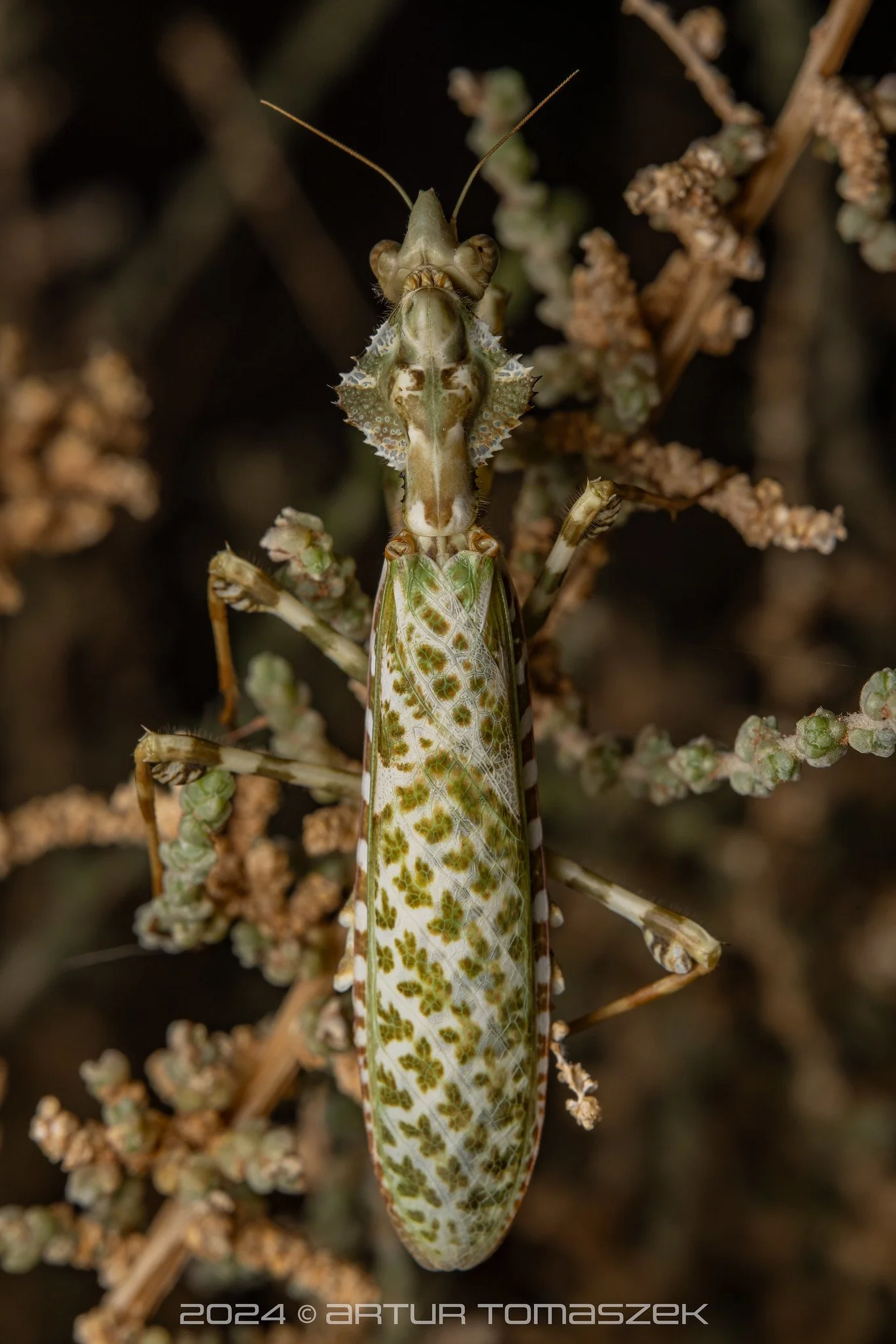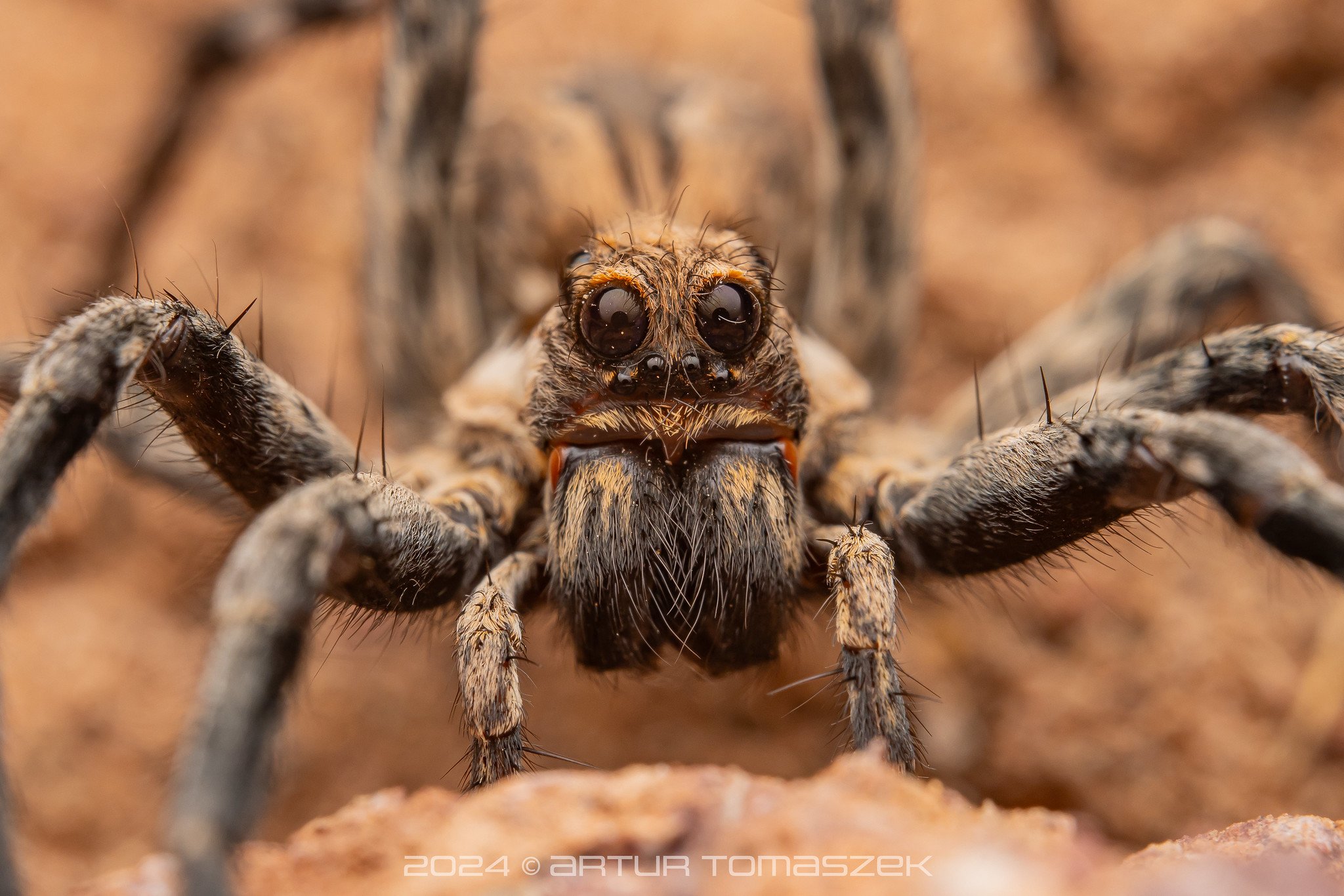Morocco (May 2024)
A snake charmer with Naja haje. A rather questionable practice, seen as a tradition in Morocco.
The idea to visit Morocco came to life a few years ago during Konference herpetologů a teraristůt in Zoo Plzeň during which I met my friend, Basti. I remember he showed me photos of a pinkish desert horned viper, Cerastes cerastes, and we thought it’d be great to go there one day and look for them together… And so we did this year!
I collected my rented car an hour before Basti’s arrival and we drove towards Ouarzazate straight away, targeting the pinkish Cerastes cerastes.
It took us 5 hours to get to our destination and settle enough to check out the first location. We were so excited to herp there that we forgot to book a hotel… it turns out finding a place to sleep in a deserted area at 3am is not easy and we ended up sleeping in the car. Oh, well…
Our accommodation for the first night. Nice views!
Naja haje
The area turned out to be more difficult to explore than it seemed. We found absolutely nothing on the first night, which was extremely cold. But, at 5am the next morning, I found a track of a snake near our car. At least we knew we were in the right place, so we resumed herping.
We found a few lizards, some inverts but still no sight of our main target. After 3 hours of herping we had breakfast, booked a hotel and in the evening we went back to search again.
We found many tracks on the sand but since the area was a mix of sand and hard soil, tracking was rather difficult. This didn’t stop us and after a few hours we finally managed to find our first male Cerastes cerastes - a healthy, fat sausage of a snake.
Cerastes cerastes
Cerastes cerastes
Ptyodactylus oudrii
Psammophis schokari (above).
Meriones crassus
We also saw some inverts, like this gorgeous Blepharopsis mendica.
Mogrus sp.
Lycosa sp.
Hottentotta gentili
Galeodes sp.
Daesiidae
Exhausted after a whole day and night of herping, we returned to our hotel to sleep for about 3 hours. The next morning we had breakfast and resumed herping again. We checked out a variety of locations, targeting different species.
Hyla meridionalis - not the kind of animal you’d expect to encounter in the desert!
We found a breathtaking oasis with small ponds inhabited by many gorgeous blue-eyed turtles, Mauremys leprosa saharnesis. We also found a red Natrix manura.
Mauremys leprosa saharica. The stunning blue eyes!
Mauremys leprosa saharica. Juvenile.
Natrix maura
In the evening, we were joined by two other friends. They found a gorgeous Daboia mauritanica on their way to meet us, and we photographed her together. On the following two nights we found more Cerastes cerastes, including juveniles and a monstrous female. An absolutely amazing experience, so different to herping in tropical jungles (with sand getting EVERYWHERE).
Daboia mauritanica
A massive Cerastes cerastes female
Cerastes cerastes
Cerastes cerastes juvenile (note the grains of sand flying around in the background, it was really windy 🤣).
More Cerastes cerastes
We then travelled south in search of Cerastes vipera. Unfortunately, the weather got much worse and although we worked hard day and night for two days, we were only able to find one faint track on the sand. Strong winds and low temperatures were not in our favour. Well, we’ll be back!
No snakes doesn’t mean no wildlife! Acanthodactylus aureus.
Buthus bonito
Cerbalus sp.
Porcellio saharaiensis
Slightly disappointed but still fully motivated, we ventured towards Guelmim to look for a “high contrast” Cerastes cerastes. The weather was still bad and the wind was making it impossible to spot any tracks in the sand. But we were in luck this time, and we found the magnificent individual below! Check out the flying sand in this photo, that’s how windy it was! 🤣
Stunning “high contrast” Cerastes cerastes.
Stunning “high contrast” Cerastes cerastes.
Mauremys leprosa saharica. A huge old male. Less impressive than its blue-eyed counterparts mentioned earlier, but still a lovely animal.
Malpolon moilensis and Lytorhynchus diadema (below).
Guelmim was great for lizards overall, including the beautiful Tarentola chazaliae below and others.
Agama bibronii
Tarentola mauritanica
Stenodactylus mauritanicus
Saurodactylus sp.
Saurodactylus harrisii
It was a great area for scorpions and other invertebrates as well. I’ve never seen desert species like this in the wild, so it was really exciting!
Aelurillus hirtipes
Menemerus sp.
Androctonus gonneti
Blossia sp.
Buthus mariefranceae
Stegodyphus lineatus
Stegodyphus lineatus. At first I thought she was covered in ticks, but it turns out it was her offspring… This species exhibit matriphagy. Reproduction leads in females to an increase of digestive enzymes, which allow her to eat more prey and stock more nutrients. The digestive enzymes, however, start to digest the insides of the female too. The mother keeps regurgitating the fluids stocked inside her for the progeny until they eat her entirely.
Eresus sp.
Although the desert doesn’t seem to be the greatest place for amphibians, which as we all know are totally dependent on water, we saw a few species of those near oasis. One of them was the fantastic Berber toad, Sclerophrys mauritanica.
Sclerophrys mauritanica
Sclerophrys mauritanica
This was my first time herping in such habitats and I had no idea what to expect. I’ve learnt a lot and I’ll definitely go back to find the species that eluded us this time. Even though the weather (especially in the end) was brutal, we managed to find a lot of interesting species and had a lot of fun together! A huge thanks to my herping buddies! 😊
Artur 🤘🏻
Our herping team
An important note: finding beer when herping in the desert is borderline impossible. It took us 5 days! And once you do, it’s REALLY expensive… But hey ho, one has to celebrate desert adventures!
More wildlife in Morocco in our Flickr album here.


































































